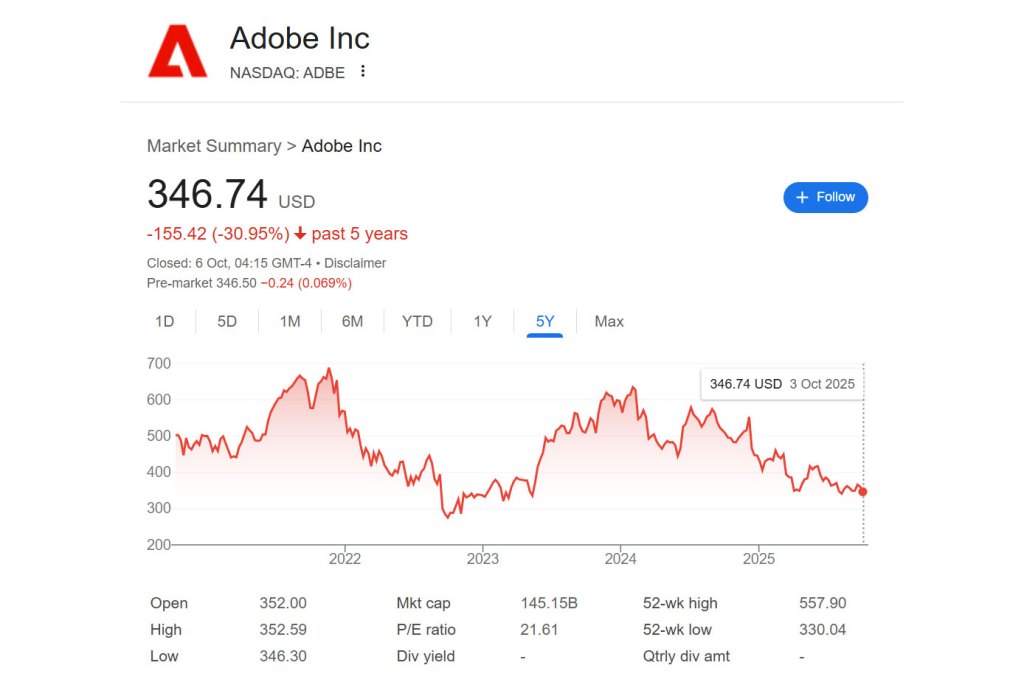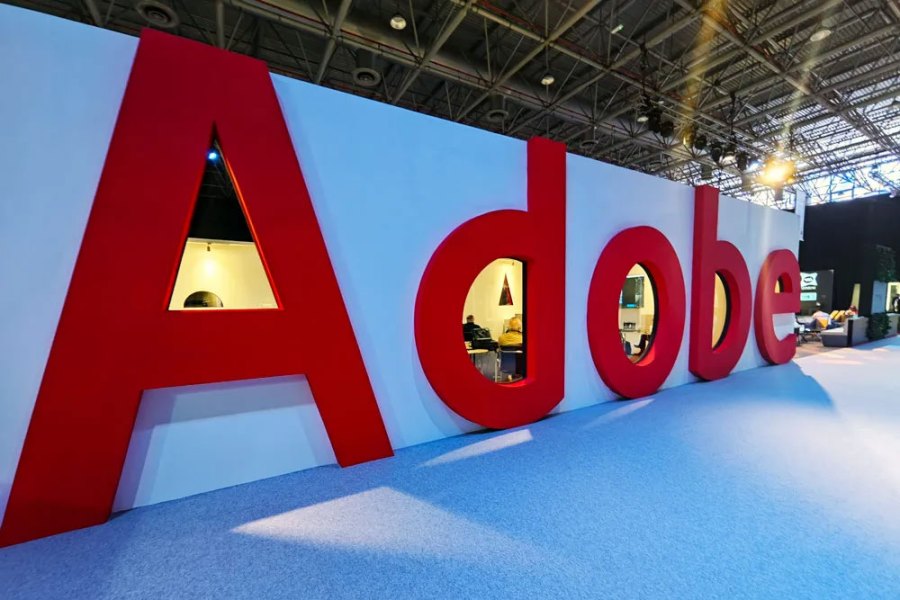Adobe stock continues to decline. Adobe make the world’s most famous photo editing software, Photoshop, yet stock continues to decline, and surprisingly, when almost every tech company stock is growing (due to increased investment in AI), Adobe’s stock is still in decline. This seems odd, as they are often talking about new AI features in every new release of software, but perhaps the issues are elsewhere. I take a look at some of the issues I think Adobe are facing, and why users continue to look for alternatives.
Adobe has a number of challenges as a business:
- The Subscription model* – Why pay monthly subscriptions forever, when there are free options available online that do similar things? Like Canva, designed to be an easy template based design system. In addition, the Adobe subscription is a 12-month subscription, so even if you are paying monthly, you still can’t cancel till 12 months have passed.
- Paid software like DxO PhotoLab, Skylum Luminar Neo, Affinity Photo, and others, that let you pay once and use the software for ever.
- AI generation itself, models from Google (Nano Banana), and numerous others, let you make images, instantly, easily, without any Photo editing skills, and depending on how many images you want, you can get started for free. Do photographers even really want AI features in programs like Photoshop, that are primarily about editing their own creations?
- Increased computer hardware demands with every update* – not everyone has the latest 12+ core processors and RTX graphics cards needed to process images, which leads us back to points 1 and 3, which mean any slow computer can generate great looking images
- Low-end entry-level software like Photoshop Elements and Premiere Elements, that do basic things that web apps can now do, as well as providing a poor user experience* with reports of multiple crashes (particularly with Premiere Elements video editing software). This software now comes with a 3 year license, further annoying people who buy it, thinking they’re going to get software for life.
- Smartphone software – most people now use smartphones for photography, and they come with amazing built-in AI editing tools, as well as free 3rd party software, with video editing apps like CapCut being particularly effective for video editing.
Adobe pain points
In times gone by software would provide a useful function, helping the end-user solve a particular problem or “pain point” so that a buyer or customer would have a genuine reason to buy the software, and be pleased with the result, as it helped them. Now, it seems Adobe has introduced a huge number of actual pain points into their own software and business model, that are making people look for alternatives.
The pain points include the subscription model, that you’re either already stuck in (and want to get out of), or if you’re a new customer, why would you want to commit yourself to a subscription model, when you know you’re going to get trapped in the system? Every new update offers new AI features, yet the software NEVER feels quicker, despite running on high-end hardware. Even with my PC with 14 cores, 32GB RAM, an RTX graphics card, it STILL feels slow doing even the most basic things, like cropping and moving an image around.
And don’t get me started on the user experience of using Premiere Elements – Adobe’s most basic video editing package – this was a god-awful experience that left me wanting my money back, and leaving a bitter taste in my mouth that I’ll never forget. Even on high-end hardware (for the time), it crashed multiple times, wasting hours of editing. Yes it was, perhaps, slightly easier to use than Davinci Resolve, but Davinci Resolve is completely free and more importantly didn’t crash.
In fact, if you watch YouTube videos, there has been an increasing number of people who have switched to Davinci Resolve, from Adobe Premiere Pro (the paid video editing package that costs $23/£22 per month). Davinci Resolve was quick to introduce new, and more importantly, useful AI features into the software, and is priced at $299 for life.
It’s not just users who are noticing the issues surrounding Adobe, as Adobe was sued by the US government for making it too difficult to cancel the subscription. [source]

So what is the solution to all of this?
Well, either Adobe starts giving customers what they want (rather than prioritising shareholders – and it’s not exactly working out for them either considering the shares continue to drop), or it’s time for photographers (and videographers) to boycott Adobe. What I actually want from Adobe, is for new releases of software to feel quicker than the old version, and importantly, not crash! However, it could be too late for Adobe, who are in the business of providing software for computers, whereas the new business model of competitors is web-based, and phone-based.
Related reading:
- Best Photoshop alternatives – no-subscription photo editing software
- The best video editing software: these are programs literally anyone can use
- Best camera phones for photography and video
The views expressed in this column are not necessarily those of Amateur Photographer magazine or Kelsey Media Limited. If you have an opinion you’d like to share on this topic, or any other photography related subject, email: [email protected]







